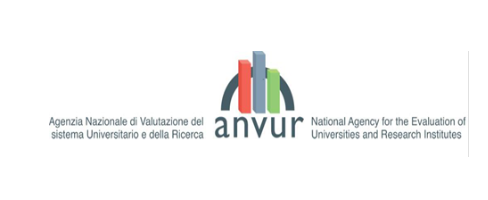THE STRATEGIC DEVELOPMENT OF THE RENEWABLE ENERGY SECTOR IN MOLDOVA: MODELS FOR INVESTMENT MANAGEMENT
DOI:
https://doi.org/10.36004/nier.es.2023.1-02Keywords:
renewable energy, investment management models, demand forecastAbstract
The periodic paradigm shifts operating on the energy markets require higher innovative approaches to facilitate the management of energy portfolios and the design of mechanisms for an accelerated renewable energy integration. Thus, international organizations, policy makers and managerial boards are continuously seeking for policy amendments and adjustments that would enhance the investments in the renewable energy sector and stimulate the transition towards the smart energy grids’ models.
The current study aims to review and apply some of the existing models for the management of renewable energy investments, using as a case study Moldova’s economy structure and its statistical data. The study is based on systemic research methods, forecasting models and estimates to identify most productive management tactics, able to ensure the proper integration of smart energies into the energy network. The author presents a model for forecasting the demand of the renewable energy market in Moldova till 2025 and 2030 year with an emphasis on the electricity segment. It also points out opinions and estimates that reflect a different perspective on the effects of investments’ management at the electricity segment level and proposes solutions that may help decision-makers in the development and integration of the country's renewable energy policy. The study offers the necessary evidence and grounded solutions for attracting and promoting investments in renewable energy projects, whereas the obtained methodology and results have a general relevance for other countries in the region with emerging economies.
Downloads
References
Abdullahi, D., Suresh, S., Renukappa, S., & Oloke, D. (2017). Key barriers to the implementation of solar energy in Nigeria: a critical analysis.In IOP Conference Series Earth Environmental Science: 2nd International Conference on Green Energy Technology (ICGET 2017), 18-20 July 2017, Rome, Italy, 83, 012015. https://doi.org/10.1088/1755-1315/83/1/012015
Ang, B. W., & Zhang, F. Q. (2000). A survey of index decomposition analysis in energy and environmental studies. Energy, 25(12), 1149-1176. https://doi.org/10.1016/S0360-5442(00)00039-6
Ang, B. W. (2004). Decomposition analysis for policymaking in energy: Which is the preferred method? Energy Policy, 32(9), 1131-1139. https://doi.org/10.1016/S0301-4215(03)00076-4
Badri, M. A. (1992). Analysis of demand for electricity in the United States. Energy, 17(7), 725-733. https://doi.org/10.1016/0360-5442(92)90080-J
Cohen, J. J., Azarova, V., Kollmann A., & Reichl, J. (2021). Preferences for community renewable energy investments in Europe. Energy Economics, 100, 105386. https://doi.org/10.1016/j.eneco.2021.105386
Dato, P. (2018). Investment in energy efficiency. Adoption of renewable energy and household behavior: evidence from OECD countries. The Energy Journal, 39(3), 213-44. https://www.jstor.org/stable/26534449
Debnath, K. B. & Mourshed, M. (2018). Forecasting methods in energy planning models. Renewable and Sustainable Energy Reviews, 88, 297-325. https://doi.org/10.1016/j.rser.2018.02.002
Deeble, V. C., & Probert, S. D. (1986). Straight-line correlations for annual energy-consumption predictions? Applied Energy, 25(1), 23-39. https://doi.org/10.1016/0306-2619(86)90060-7
Egli, F. (2020). Renewable energy investment risk: an investigation of changes over time and the underlying drivers. Energy Pol, 140, 111428. https://doi.org/10.1016/j.enpol.2020.111428
European Bank for Reconstruction and Development (EBRD). (2014). Study of the Business Environment and Enterprise Performance, BEEPS V (2011-2014). London. http://ebrd-beeps.com
Greene D. L., (2009). Measuring Energy Sustainability. In T. E. Graedel & E. van der Voet (Eds.), Linkages of Sustainability (Vol. 4, pp. 354-373). Cambridge: The MIT Press. https://doi.org/10.7551/mitpress/8455.003.0026
Gropa, V. (2018). Estimation of the wind power impact on the power system of the Republic of Moldova [Doctoral thesis]. Technical University of Moldova. http://www.cnaa.md/en/thesis/52069/
Hotărâre cu privire la aprobarea limitelor de capacitate, a cotelor maxime și a categoriilor de capacitate în domeniul energiei electrice din surse regenerabile valabile până la data de 31 decembrie 2025, nr. 401 din 08-12-2021. (2021). Monitorul Oficial al Republicii Moldova, 302-306, art. 684. https://www.legis.md/cautare/getResults?doc_id=128987&lang=ro
International Renewable Energy Agency (IRENA). (2019). Renewables Readiness Assessment: Republic of Moldova. https://mc-cd8320d4-36a1-40ac-83cc-3389-cdn-endpoint.azureedge.net/-/media/Files/IRENA/Agency/Publication/2019/Feb/IRENA_RRA_Moldova_2019_EN.pdf?rev=ee83faa67c5f457e86835305d2ed29d4
Kitzing, L. (2014). Risk implications of renewable support instruments: Comparative analysis of feed-in tariffs and premiums using a mean-variance approach. Energy, 64, 495-505. https://doi.org/10.1016/j.energy.2013.10.008
Kleinpeter, M. (1995). Energy planning and policy. England: John Wiley & Sons Ltd.
Labys, W. C. (1990). Econometric supply models. Energy 15(7-8), 545-547. https://doi.org/10.1016/0360-5442(90)90003-K
Lee, A. H. I., Kang, H.-Y., & Huang, T.-T. (2017). Project Management Model for Constructing a Renewable Energy Plant. Procedia Engineering, 174, 145-154. https://doi.org/10.1016/j.proeng.2017.01.186
Liu, X., & Zeng, M. (2017). Renewable energy investment risk evaluation model based on system dynamics. Renewable and Sustainable Energy Reviews, 73, 782-788. https://doi.org/10.1016/j.rser.2017.02.019
Michalik, G., Khan, M. E., Bonwick, W. J., & Mielczarski, W. (1997). Structural modelling of energy demand in the residential sector: 1. Development of structural models. Energy, 22(10), 937-947. https://doi.org/10.1016/s0360-5442(97)00029-7
Movilla, S., Miguel, L. J., & Blázquez, L. F. (2013). A system dynamics approach for the photovoltaic energy market in Spain. Energy Policy, 60, 142-154. https://doi.org/10.1016/j.enpol.2013.04.072
Nasalciuc, I. (2016a). Economic aspects of fossil fuel social costs. Why do we subsidize and mediate the climate change process? The Journal Contemporary Economy = Revista Economia Contemporană 1(4), 133-147. http://www.revec.r o/papers/160409.pdf
Nasalciuc, I. (2016b). Managing the renewable energy grid integration process: risks and challenges. Journal of Financial and Monetary Economics, 3, 203-214. https://ideas.repec.org/a/vls/rojfme/v3y2016i1p203-214.html
Moldova National Development Strategy (NDS) “European Moldova 2030”. (2022). Monitorul Oficial al Republicii Moldova, 409-410, art. 758. https://monitorul.gov.md/ro/monitorul/view/pdf/2579/part/1#page=30
Prasad, R. D., Bansal, R. C., & Raturi, A. (2014). Multi-faceted energy planning: A review. Renewable and Sustainable Energy Reviews, 38, 686-699. http://repository.usp.ac.fj/7558/1/Multi_-_faceted_energy_planning-a_review.pdf
Qiu, D., Dinçer, H., Yüksel, S., & Ubay, G. G. (2020). Multi-faceted analysis of systematic risk-based wind energy investment decisions in E7 economies using modified hybrid modeling with IT2 Fuzzy Sets. Energies, 13, 1423. https://doi.org/10.3390/en13061423
Schiera, D. S., Minuto, F. D., Bottaccioli, L., Borchiellini, R., & Lanzini, A. (2019). Analysis of rooftop photovoltaics diffusion in energy community buildings by a novel GIS- and agent-based modeling Co-simulation platform. IEEE Access, 7, 93404-93432. https://doi.org/10.1109/ACCESS.2019.2927446
Schinko, T., & Komendantova, N. (2016). De-risking investment into concentrated solar power in North Africa: Impacts on the costs of electricity generation. Renewable Energy, 92, 262-272. https://doi.org/10.1016/j.renene.2016.02.009
Schwerhoff, G., & SY, M. (2017). Financing renewable energy in Africa - Key challenge of the sustainable development goals. Renewable and Sustainable Energy Reviews, 75, 393-401. https://doi.org/10.1016/j.rser.2016.11.004
Shaktawat, A., & Vadhera, S. (2021). Risk management of hydropower projects for sustainable development: a review. Environment, Development and Sustainability, 23(8), 45-76 https://doi.org/10.1007/s10668-020-00607-2
Sterman, J. D. (1988). Modelling the formation of expectations: The history of energy demand forecasts. International Journal of Forecasting, 4(2), 243-259. https://doi.org/10.1016/0169-2070(88)90080-5
Sterman, J. D., Richardson, G. P., & Davidsen, P. (1988). Modelling the estimation of petroleum resources in the United States. Technological Forecasting and Social Change, 33(3), 219-249. https://doi.org/10.1016/0040-1625(88)90015-7
Taghizadeh-Hesary, F., &Yoshino, N. (2020). Sustainable Solutions for Green Financing and Investment in Renewable Energy Projecte. Energies, 13(4), 788. https://doi.org/10.3390/en13040788
World Bank. (2013). Moldova - Policy priorities for private sector development: Main report. (English). Washington, D.C.: World Bank Group. https://documents.worldbank.org/en/publication/documents-reports/documentdetail/720051468275127219/main-report
World Energy Council. (2022). World Energy Trilemma Index 2022. https://www.worldenergy.org/publications
Zmeureanu, R. (1992). A new method for evaluating the normalized energy consumption in office buildings. Energy, 17(3), 235-246. https://doi.org/10.1016/0360-5442(92)90051-Z















